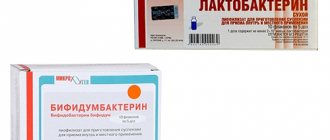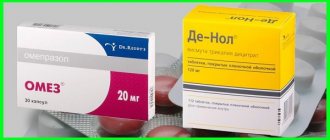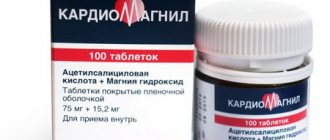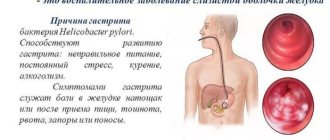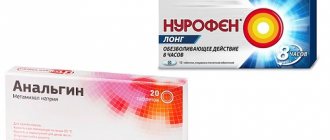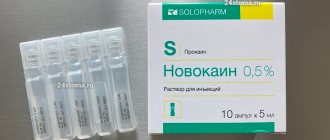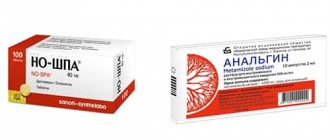Complex therapy using antioxidants and vitamins is used to treat various neurological pathologies. The drugs Mexidol and Combilipen help restore nerve conduction damaged as a result of stress and malfunction of the central nervous system. The simultaneous use of drugs is prescribed by a specialist depending on the patient’s condition.
The drugs Mexidol and Combilipen help restore nerve conduction damaged as a result of stress and malfunction of the central nervous system.
What do Kombilipen and Mexidol help with?
Multivitamins Combilipen are prescribed for:
- intercostal neuralgia;
- osteochondrosis (thoracic, cervical, lumbar);
- lumbar syndrome;
- trigeminal neuralgia;
- neuritis of the facial nerve;
- alcoholic neuropathy.
Indications for taking Miksidol are:
- disorders of the nervous system
- atherosclerosis;
- stress;
- exhaustion of the body;
- disturbance of vascular blood flow;
- alcohol intoxication.
Mexidol is taken when the body is exhausted.
Indications for the joint use of drugs are severe neurological pathologies and disorders:
- cerebrovascular disease;
- withdrawal;
- alcoholic neuropathy;
- cerebral blood flow disorder;
- strokes;
- polyneuropathy.
The complex of drugs is used in rehabilitation therapy after strokes.
Pharmacology
Several elements act as components.
Vitamin B1 saturates nerve cells with glucose. The lack of this substance causes damage to nerve cells and their subsequent increase. As a result, this negatively affects the nervous system.
Vitamin B6 is involved in metabolic processes in the central nervous system. It normalizes nerve impulses, stabilizes inhibition and agitation.
Vitamin B12 takes part in the production of choline and nucleic acids. This element increases the ability of tissues to recover.
It also contains lidocaine, which has an analgesic effect. The substance promotes vasodilation, which ensures better absorption of vitamins.
There is currently no information on pharmacodynamics and pharmacokinetics.
How to use correctly
Injections are administered over 4-5 days, after which the patient can be prescribed medication in tablet form.
If medications are presented in different pharmacological forms, you should follow the instructions for their use.
B vitamins in tablets can be taken at the same time without chewing.
Where should the injection be given?
If the patient is prescribed injections, the drugs are administered separately:
- Combilipen must be administered intramuscularly;
- Mexidol can be injected either into a muscle or into a vein (an injection or a dropper in saline solution).
Combilipen must be administered intramuscularly.
Solutions for injections do not mix. If both drugs are administered intramuscularly, 2 injections are given with different syringes.
How painful are Kombilipen injections?
Combilipen is a combination drug that contains lidocaine and B vitamins. The injections do not cause a strong painful effect due to the presence of lidocaine.
Dosage regimen
The dosage of the drug is determined not only by the degree of degenerative-dystrophic changes in the intervertebral discs and associated complications, but also by the characteristics of the pathological process (stage of subcompensation or decompensation). The scheme for using Mexidol in the stage of decompensation (when positive dynamics cannot be achieved despite competent and timely drug correction) is shown in the table below.
Table. Dosage of Mexidol for acute osteochondrosis
| Form of application | Dosage |
| Intramuscular injections | 1 ampoule per day for 7-10 days. |
| Intravenous injections | 1-2 ampoules per day. When using a jet infusion, the infusion time should be at least 5-7 minutes. The course of treatment is 3-10 days. |
| Infusion drip (droppers) | 2 ampoules (diluted with 200 ml of isotonic saline solution with a salt concentration of 0.9%). The recommended duration of treatment is 3-5 days. The infusion rate is 60 drops per minute. After this period, the patient should be transferred to oral dosage forms or intramuscular injections. |
| Pills | 150-450 mg per day. The minimum duration of therapy is 2 weeks. |
For complex treatment of subcompensated pain syndrome, Mexidol is used in the form of injections 2 times a day, 1-2 mg ampoules. The drug in tablet form is usually prescribed in a dosage of 125-250 mg 2-3 times a day. The duration of therapy depends on the degree of hypoxia and existing complications and is determined individually.
Important! Treatment with the drug should always begin with the use of minimal effective therapeutic doses. For most patients, this dose is 50-100 mg at a time. The maximum daily dosage is rarely used in the treatment of cervical osteochondrosis and is 0.8 g.
special instructions
Mexidol has antioxidant properties, removes toxins and accelerates the regeneration of damaged tissues. The use of antioxidants in various forms of release has a number of features.
Pregnancy and lactation
Joint use of drugs during pregnancy and breastfeeding is not prescribed. These conditions are an absolute contraindication to taking Combilipen.
Childhood
Concomitant use of drugs is not prescribed for children. For encephalopathy and traumatic brain injury, a one-time dose of Mexidol is allowed.
Elderly age
For patients over 65 years of age, combination therapy can be prescribed only under special conditions. Restrictions apply to Kombilipen solution, which contains benzyl alcohol.
Why do you need Mexidol for cervical osteochondrosis?
Osteochondrosis is, first of all, a degenerative pathology in which deformation of the intervertebral discs occurs (the vertebrae are compressed and crush the disc located between them). An intervertebral disc is a formation of fibrocartilaginous annular plates filled with a gelatinous jelly-like core and surrounded by a connective tissue membrane. With osteochondrosis, compression of two adjacent vertebrae occurs, which puts pressure on the disc and causes displacement of the pulp, which begins to bulge and protrude through the fibrous membrane. Such displacements are called hernias and protrusions.
If you want to learn in more detail how protrusion differs from herniated intervertebral discs, and also consider the causes of manifestations, diagnosis and treatment methods, you can read an article about this on our portal.
One of the characteristic symptoms of osteochondrosis is the formation of protrusions and hernias in the spine
Hernias and protrusions can cause not only compression of the spinal endings, but also compression of the blood vessels through which blood enriched with minerals and oxygen enters the brain cells. Muscle spasms and swelling of paravertebral soft tissues can also interfere with the flow of lymph and blood. Clinically, circulatory disorders in cervical osteochondrosis of the 3rd degree are manifested by chronic headaches, instability of blood pressure, visual and auditory dysfunction.
Circulatory disorders caused by osteochondrosis are manifested by painful headaches
Mexidol allows not only to establish microcirculation of fluids in blood and lymphatic vessels, but also to improve the neurotrophic parameters of tissues, as well as reduce the degree of endogenous intoxication caused by the destruction of intervertebral disc components.
The clinically significant effect of treatment with the drug is manifested by the following result:
- relief or significant reduction in the intensity of cervicogenic headaches and dizziness;
- elimination of noise and squeaking in the ears;
- restoration of impaired visual function (disappearance of spots, flickering, ripples before the eyes);
- the severity of neurological disorders (paresis and paresthesia) decreases.
After taking the drug, limbs become less numb and the severity of neurological disorders decreases
Note! The main therapeutic effect of using Mexidol as part of a complex treatment of dystrophy and degeneration of intervertebral discs in the cervical spine is to improve blood circulation and prevent cerebral hypoxia.
Mexidol® (Mexidol®)
Mexidol® is an inhibitor of free radical processes, a membrane protector with angipoxic, stress-protective, nootropic, anticonvulsant and anxiolytic effects. The drug increases the body's resistance to the effects of various damaging factors (shock, hypoxia and ischemia, cerebrovascular accidents, intoxication with alcohol and antipsychotics (neuroleptics)).
The mechanism of action of Mexidol® is due to its antioxidant, antihypoxic and membrane protective effects. It inhibits lipid peroxidation, increases the activity of superoxide dismutase, increases the lipid-protein ratio, reduces membrane viscosity, and increases its fluidity.
Mexidol® modulates the activity of membrane-bound enzymes (calcium independent phosphodiesterase, adenylate cyclase, acetylcholinesterase), receptor complexes (benzodiazepine, GABA, acetylcholine), which enhances their ability to bind to ligands, helps preserve the structural and functional organization of biomembranes, neurotransmitter transport and improve synaptic transmission.
Mexidol® increases the content of dopamine in the brain.
Causes an increase in compensatory activation of aerobic glycolysis and a decrease in the degree of inhibition of oxidative processes in the Krebs cycle under hypoxic conditions with an increase in the content of ATP and creatine phosphate, activation of the energy-synthesizing functions of mitochondria, stabilization of cell membranes.
The drug improves metabolism and blood supply to the brain, improves microcirculation and rheological properties of blood, and reduces platelet aggregation. Stabilizes the membrane structures of blood cells (erythrocytes and platelets) during hemolysis.
It has a lipid-lowering effect, reduces the content of total cholesterol and low-density lipoproteins.
The anti-stress effect is manifested in the normalization of post-stress behavior, somatovegetative disorders, restoration of sleep-wake cycles, impaired learning and memory processes, reduction of dystrophic and morphological changes in various structures of the brain.
Mexidol® has a pronounced antitoxic effect in withdrawal symptoms. It eliminates the neurological and neurotoxic manifestations of acute alcohol intoxication, restores behavioral disorders, autonomic functions, and is also able to relieve cognitive impairment caused by long-term use of ethanol and its withdrawal.
Under the influence of Mexidol®, the effect of tranquilizing, neuroleptic, antidepressant, hypnotics and anticonvulsants is enhanced, which makes it possible to reduce their doses and reduce side effects. Mexidol® improves the functional state of ischemic myocardium. In conditions of coronary insufficiency, it increases collateral blood supply to the ischemic myocardium, helps maintain the integrity of cardiomyocytes and maintain their functional activity. Effectively restores myocardial contractility in reversible cardiac dysfunction.
